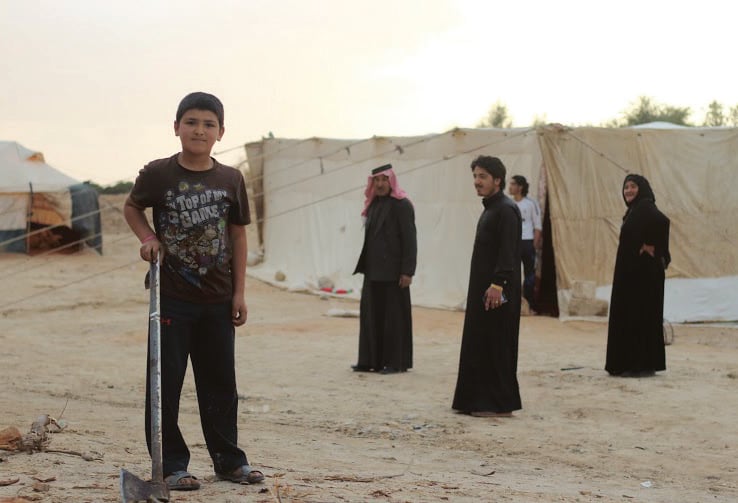Among Syrian Refugee Children in Jordan

Children who fled violence in Syria to find refuge in Jordan are increasingly forced to work long hours at low wages to help their families survive, according to a new report from the Euro-Mediterranean Human Rights Monitor and Syrian Network for Human Rights released on World Child Labour Day. It’s estimated that at least 60,000 children from Syria are working in conditions that are often dangerous, exploitative and without any real government oversight.
The report, titled “Weariness of the Young: Syrian Refugee Child Labor in Jordan” estimates that 51.4 percent (668,000) of the 1.3 million Syrians living in Jordan are children. An even more neglected group are the 16,000 Palestinians who fled to Jordan from Syria, of whom about 6,560 are children. Even adults from this group are prohibited from working in Jordan.
Based on information collected through interviews with child workers, their families and employers, and relevant government agencies and NGOs, the report outlines the dynamics that force children to work instead of attend school. The primary factor is the high cost of living; Amman, the capital city of Jordan, is considered the most expensive city in the Middle East. In addition, only about 10 percent of the refugees are eligible for cash assistance from the United Nations High Commissioner for Refugees (UNHCR). Yet many of the families lost breadwinners in the civil war; 30 percent of the Palestinian-Syrian families are headed by women.
Other factors fueling child labor are the demand among Jordanian employers for low-wage workers and the inability of the country’s schools to accommodate the influx of refugees. The report documents that 80 percent of child workers are not allowed any holidays and are paid wages of 90-150 dinar per month (US$127-211) –far less than the minimum wage in Jordan. In Al-Zaatari refugee camp (the largest camp in the Middle East and the second-largest worldwide) 24 percent of child workers said in a recent survey that they do not receive any payment at all; 15 percent were subjected to physical violence. Across Jordan, more than a third of child workers report suffering injuries on the job that require treatment. Meanwhile, an estimated 90,000 child refugees from Syria are not receiving any education at all.
“These children’s families fled oppression in one country, only to find it in another,” said Ihsan Adel, Euro-Med Monitor legal adviser. “It is true that Jordan has welcomed large numbers of refugees generously. However, these children have a right to protection, education and basic human dignities. This is the responsibility of both Jordan and the international community, which has not yet shouldered its share of the burden of the refugees created by the Syrian crisis.”


